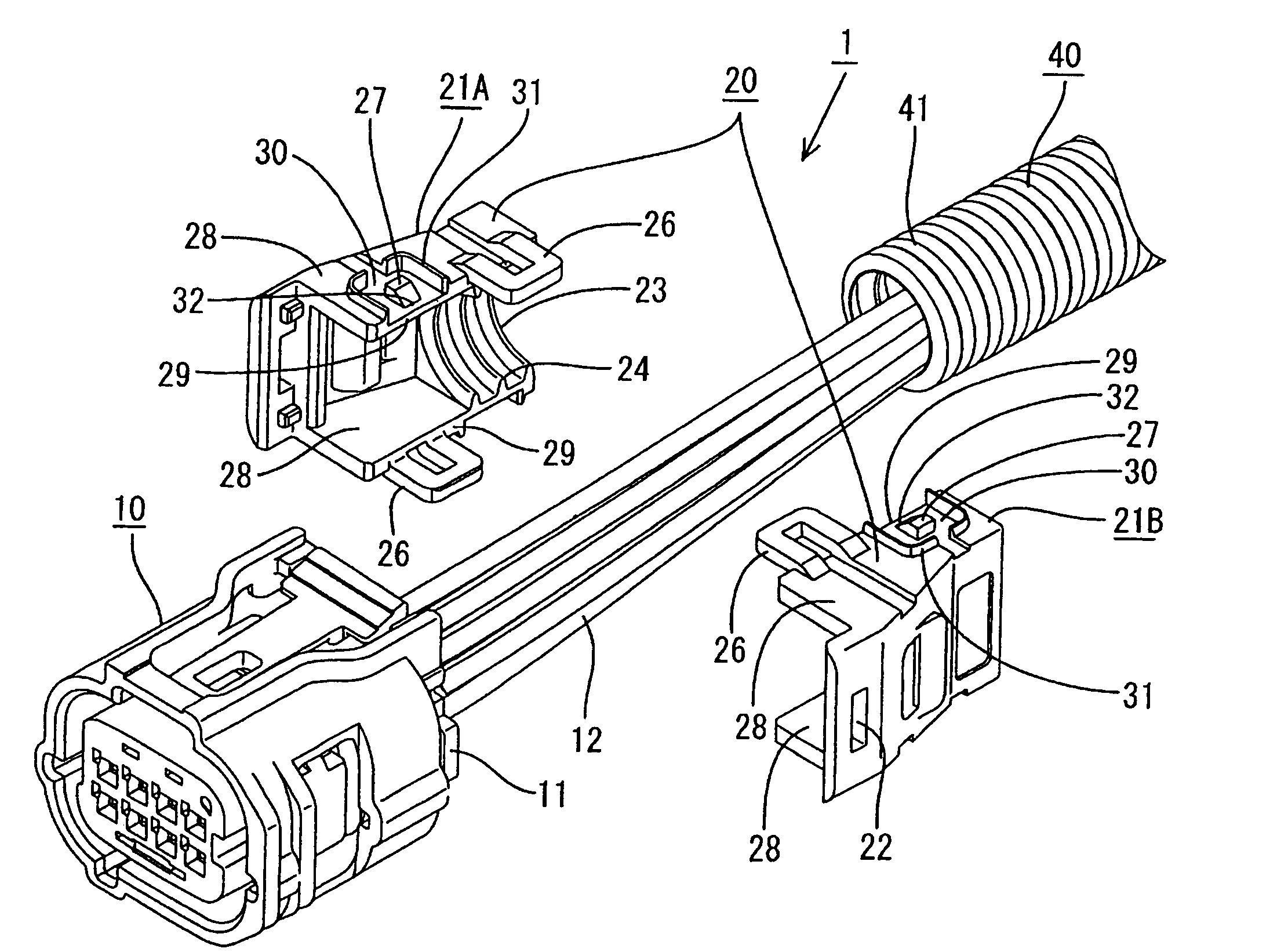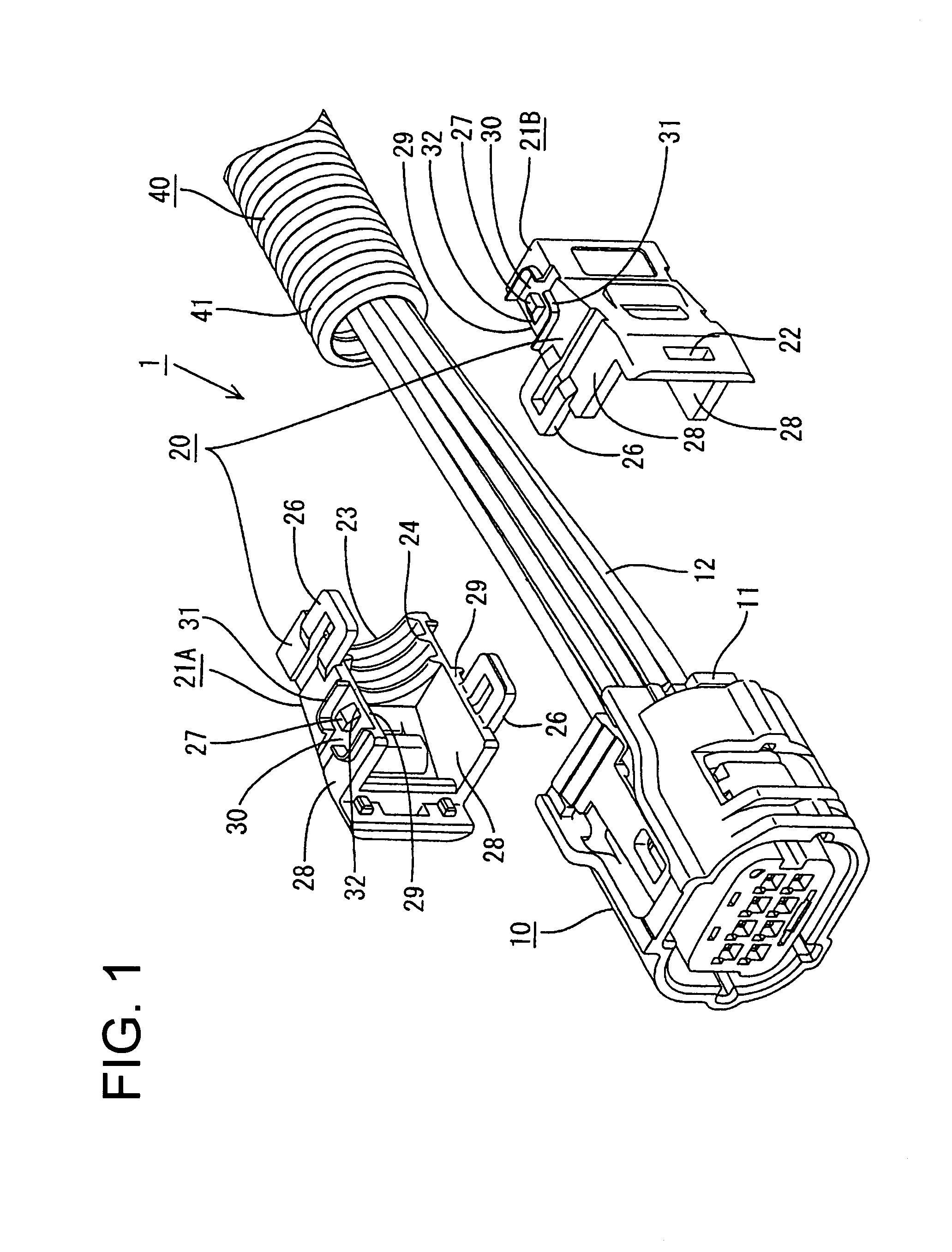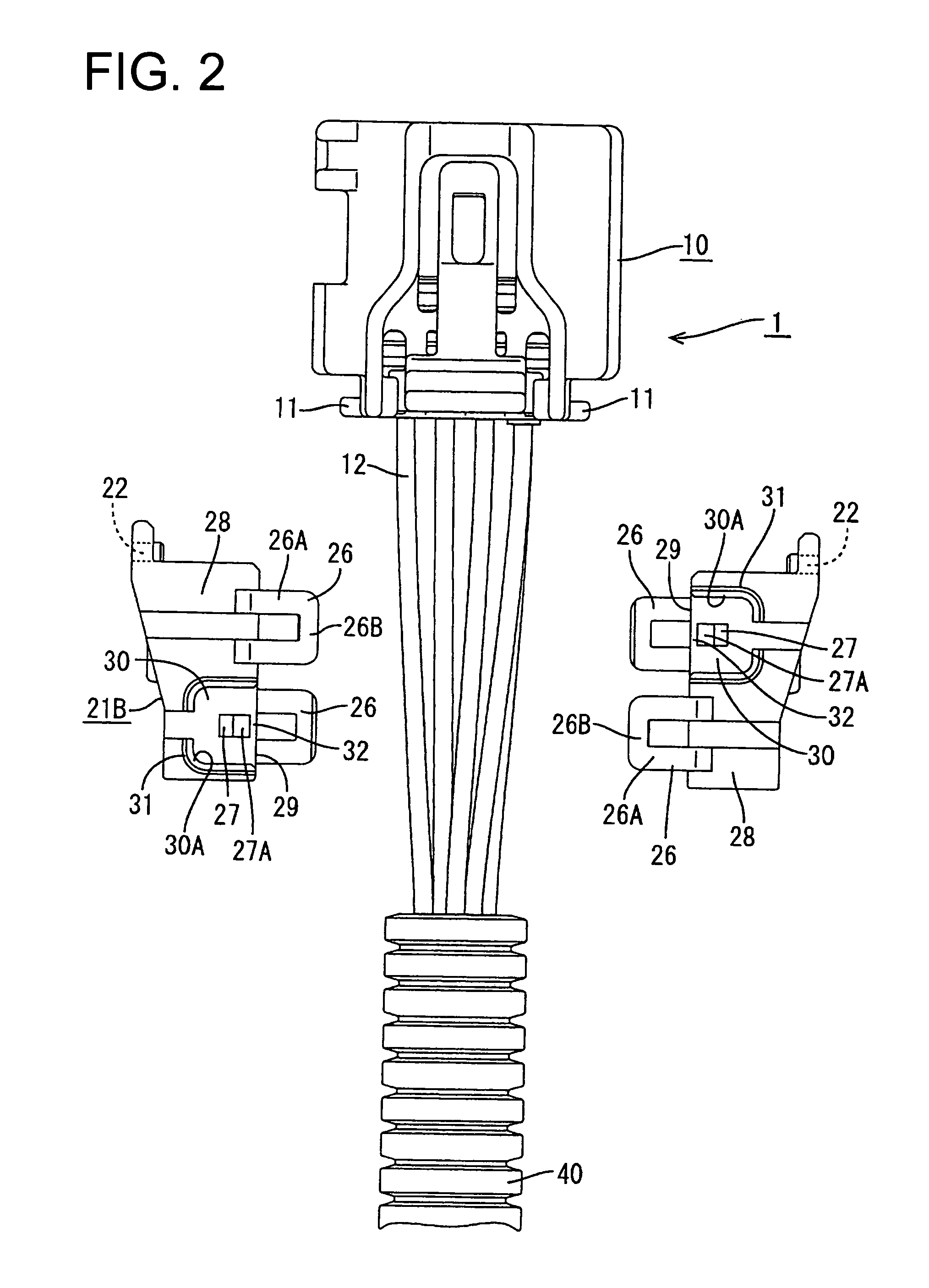Wire cover with two longitudinal halves connectable around electric wires
a technology of connecting wires and covers, which is applied in the direction of coupling bases/cases, coupling device connections, electrical appliances, etc., can solve the problems of damage to the insulation coating of electric wires, and achieve the effect of reducing the outer dimension of the cover, simplifying the construction of the connector, and facilitating the connection
- Summary
- Abstract
- Description
- Claims
- Application Information
AI Technical Summary
Benefits of technology
Problems solved by technology
Method used
Image
Examples
Embodiment Construction
[0041]A connector according to the invention is identified generally by the numeral 1 in FIGS. 1 through 9. The connector 1 includes a housing 10 that accommodates terminal fittings (not shown) connected to electric wires 12 and a cover 20. The cover 20 is constituted of two halves 21A and 21B and is mounted on the housing 10 (see FIGS. 1 through 3). In the following description, the direction in which the electric wires 12 are extended from the connector housing 10 is defined as the front-to-back direction. The direction in which the halves 21A and 21B are connected to each other is defined as the right-to-left direction. The direction crossing the above two directions (i.e. the direction crossing the paper on which FIG. 2 is shown) is defined as the vertical direction.
[0042]The wires 12 connected to the terminal fittings extend from a rear end of the housing 10. Mounting projections 11 for mounting the cover 20 on the connector housing 10 are formed at right and left sides of a re...
PUM
 Login to View More
Login to View More Abstract
Description
Claims
Application Information
 Login to View More
Login to View More - R&D
- Intellectual Property
- Life Sciences
- Materials
- Tech Scout
- Unparalleled Data Quality
- Higher Quality Content
- 60% Fewer Hallucinations
Browse by: Latest US Patents, China's latest patents, Technical Efficacy Thesaurus, Application Domain, Technology Topic, Popular Technical Reports.
© 2025 PatSnap. All rights reserved.Legal|Privacy policy|Modern Slavery Act Transparency Statement|Sitemap|About US| Contact US: help@patsnap.com



